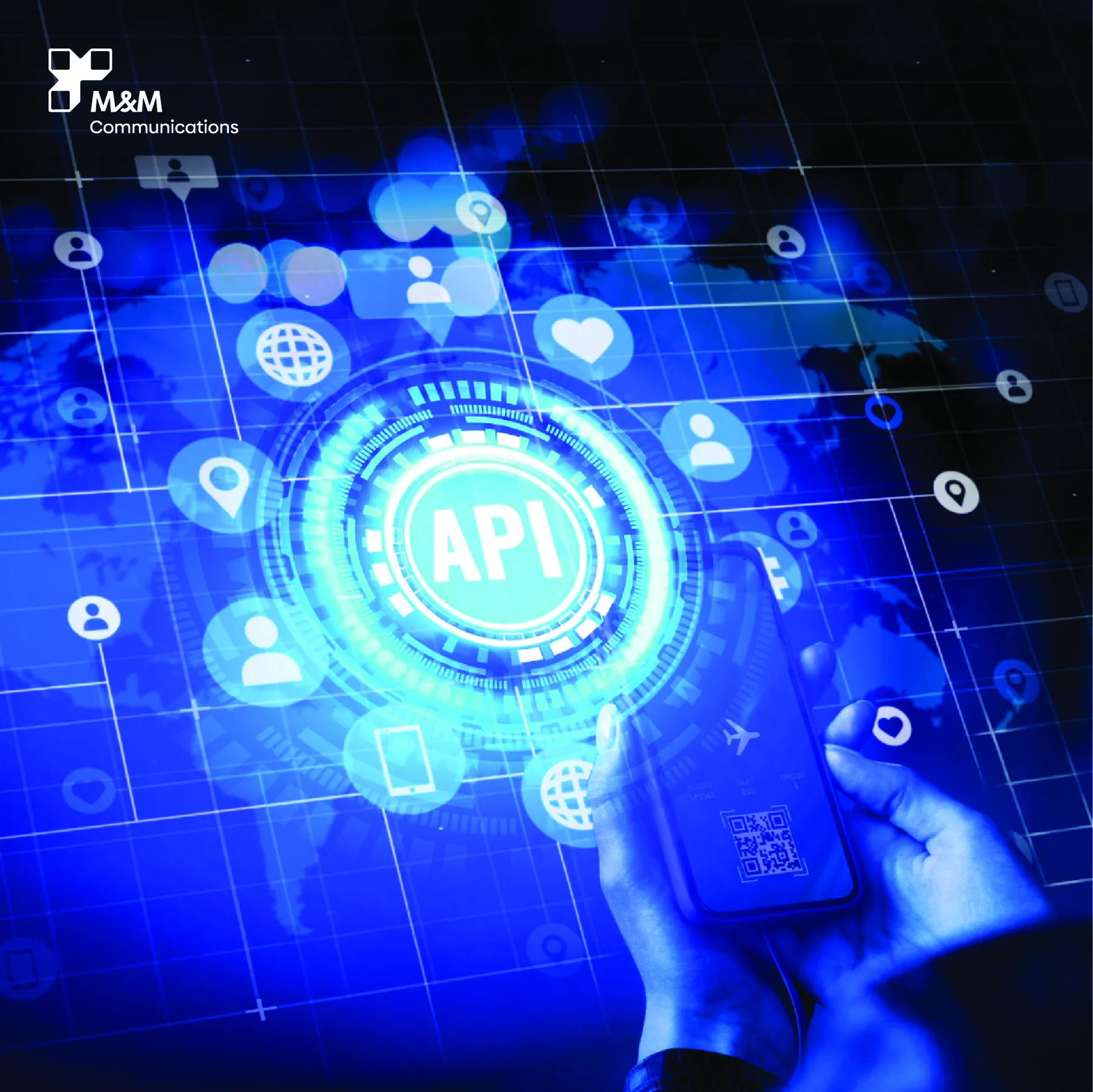
AI-Powered Video Enhancement and Neural Networks: Revolutionary Technology for Vietnamese Video Marketing
The AI Revolution in Video Production
Artificial intelligence and neural networks are fundamentally transforming video marketing for Vietnamese businesses, democratizing capabilities that once required expensive equipment and specialized expertise. From automated color grading to intelligent upscaling and smart editing assistants, AI-powered tools enable marketers to produce professional-quality video content faster, cheaper, and with smaller teams than ever before.
The Vietnamese market benefits particularly from these technologies. Small and medium businesses that previously couldn't afford professional video production can now create compelling content using AI-enhanced smartphones and accessible software. At the same time, established production companies leverage AI to streamline workflows, reduce costs, and offer services that were technically impossible just years ago.
What makes AI-powered video enhancement revolutionary isn't just automation of tedious tasks—though that alone provides tremendous value. The real breakthrough lies in how neural networks trained on millions of videos can make creative and technical decisions that rival human expertise, often in seconds rather than hours.
Understanding Neural Networks for Video Processing
Neural networks process video through layers of artificial neurons that learn patterns from training data. For video enhancement, networks might be trained on millions of before-and-after examples: low-quality footage paired with high-quality versions, poorly lit scenes alongside professionally lit alternatives, or shaky camera work matched with stabilized results.
Convolutional neural networks (CNNs) excel at image and video processing because they detect spatial patterns effectively. Vietnamese developers and production companies increasingly use CNN-based tools for tasks like object detection, scene recognition, and automated editing decisions. These networks identify elements like faces, products, logos, and scene changes with remarkable accuracy.
Generative adversarial networks (GANs) power some of the most impressive video enhancement capabilities. Two neural networks compete—one generating enhanced footage, the other evaluating its quality. This adversarial process produces results that often exceed what traditional algorithms can achieve, particularly for upscaling and restoration tasks crucial for Vietnamese marketers working with archive footage or user-generated content.
Recurrent neural networks (RNNs) and their advanced variants like LSTMs handle temporal aspects of video that standard image processing networks miss. These architectures understand sequence and motion, making them ideal for Vietnamese applications requiring smooth transitions, motion prediction, and temporal coherence across frames.
AI-Powered Video Upscaling and Resolution Enhancement
Upscaling video from lower to higher resolutions represents one of AI's most valuable applications for Vietnamese marketers. Traditional upscaling simply interpolates pixels, creating blurry results when enlarging footage significantly. AI-powered upscaling uses neural networks trained to intelligently reconstruct detail that wasn't present in the original footage.
Tools like Topaz Video AI, AVCLabs Video Enhancer, and integrated features in software like DaVinci Resolve use sophisticated neural networks to upscale SD footage to HD, HD to 4K, or even 4K to 8K with remarkably convincing results. Vietnamese businesses with valuable archive footage shot in standard definition can breathe new life into these assets, making them suitable for modern digital platforms without reshooting.
The technology works by analyzing patterns in the existing footage and making educated guesses about what additional detail should exist based on training from millions of high-resolution video examples. When a neural network sees low-resolution text, it doesn't just blur it larger—it attempts to reconstruct sharp letterforms. When processing faces, it adds realistic skin texture and detail rather than simply smoothing pixels.
Vietnamese production companies use AI upscaling strategically. A client's 2010 corporate video shot in 720p HD can be upscaled to 4K for use on large conference screens. User-generated content from customers can be enhanced for use in marketing campaigns. Drone footage from earlier-generation cameras gains new life suitable for modern distribution requirements.
Limitations exist—AI can't truly create information that wasn't captured. Heavily compressed footage, extremely low resolution sources, or footage with motion blur won't upscale as effectively as clean, well-shot originals. Vietnamese marketers should expect impressive but not miraculous results, best suited for footage that was reasonably good quality to begin with.
Automated Color Grading and Look Development
Color grading traditionally requires skilled colorists working for hours to achieve cohesive looks across footage shot under varying conditions. AI-powered color grading tools analyze footage and apply professional-grade color corrections automatically, dramatically reducing time and cost for Vietnamese productions.
Tools like Color Match in DaVinci Resolve use machine learning to match color and tone between clips, ensuring consistency across multi-camera shoots or scenes filmed on different days. Vietnamese wedding videographers, event producers, and corporate video teams benefit enormously from these capabilities, achieving professional consistency without manual shot-by-shot correction.
AI can analyze reference images or video to extract and apply their color characteristics to new footage. A Vietnamese brand might provide a reference commercial with their preferred aesthetic, and AI tools can analyze that look and apply similar color grading to new content automatically. This capability ensures brand consistency across campaigns while reducing production costs.
Skin tone correction powered by neural networks provides particular value for Vietnamese productions. AI identifies faces and skin automatically, applying corrections that maintain natural, flattering appearance across diverse lighting conditions and skin tones. This eliminates the painstaking manual work traditionally required to ensure everyone looks their best on camera.
Scene detection and classification enable contextual color grading. AI identifies whether a scene is indoors or outdoors, day or night, and applies appropriate corrections automatically. Vietnamese corporate videos with multiple locations and lighting scenarios benefit from this intelligent, context-aware processing that would consume hours if performed manually.
Noise Reduction and Image Cleanup
Digital noise from low-light shooting or high ISO settings degrades video quality significantly. AI-powered noise reduction analyzes video frame-by-frame, distinguishing between noise artifacts and actual image detail to remove grain while preserving sharpness that traditional denoisers blur away.
Vietnamese videographers shooting in challenging conditions—dimly lit restaurants for food marketing, nighttime events, or poorly lit retail environments—gain clean, professional-looking footage from situations that previously produced unusable results. AI noise reduction salvages footage that would otherwise be rejected, providing real business value by reducing reshoot requirements.
Compression artifacts from heavily compressed source material can be reduced through AI analysis that reconstructs detail degraded by compression algorithms. Vietnamese marketers receiving user-generated content or working with material from various sources can clean up quality issues before incorporating footage into professional campaigns.
Stabilization algorithms powered by machine learning produce smoother results than traditional approaches. AI can distinguish intentional camera movement from unwanted shake, stabilizing handheld footage while preserving the dynamic feel. Vietnamese action sports marketers, travel content creators, and anyone shooting without professional stabilization equipment benefit from these advanced algorithms.
Intelligent Automated Editing and Scene Detection
AI-powered editing assistants analyze footage and make intelligent decisions about where to cut, which clips to use, and how to structure narratives. While not replacing creative editors for premium work, these tools dramatically accelerate editing for routine projects common in Vietnamese marketing.
Automated scene detection identifies shot changes, different locations, and distinct segments within long recordings. Vietnamese wedding videographers dealing with hours of footage can have AI identify key moments—the ceremony, speeches, first dance—creating an organized timeline that would take hours to assemble manually.
Facial recognition and tracking enable smart edits based on who appears on camera. Vietnamese corporate communications teams can automatically compile all footage featuring their CEO from hours of event coverage, or create social media cuts highlighting specific team members from longer presentations.
Audio analysis identifies speech, music, and environmental sound, enabling automated editing decisions. AI can remove silence, trim dead air, and create tighter edits based on audio cues. Vietnamese podcast creators converting content to video format benefit from these capabilities that synchronize cuts with natural speech patterns.
Template-based AI editing generates complete videos from raw footage using predefined structures. Vietnamese real estate marketers might feed property footage into a template, and AI assembles a polished property tour with music, graphics, and professional pacing automatically. While results lack the creative touch of human editing, they provide cost-effective solutions for high-volume content needs.
Automated Captioning and Transcription
Speech-to-text algorithms powered by neural networks generate accurate captions and transcripts with minimal manual correction. Vietnamese businesses creating content in English benefit from these tools, while Vietnamese language support continues improving as local tech companies develop models trained on Vietnamese speech patterns.
Automated captioning makes video content accessible to hearing-impaired audiences while improving engagement for viewers watching without sound—crucial for social media where most video plays silently initially. Vietnamese marketers can add professional captions to content quickly, ensuring accessibility and maximizing reach.
Transcripts enable content repurposing. Vietnamese marketing teams convert video content to blog posts, social media text, and email newsletters by editing transcripts—expanding content value beyond video alone. Search engines index transcripts, improving SEO for video content that otherwise provides limited text for crawlers.
Object and Face Detection for Marketing Applications
Neural networks trained to recognize objects, faces, and specific visual elements enable sophisticated marketing applications for Vietnamese businesses. These capabilities transform how brands analyze content performance and create personalized experiences.
Product detection in user-generated content helps Vietnamese brands identify when customers share content featuring their products. AI scans social media video automatically, flagging relevant content for potential reposting or rights acquisition. Brands discover authentic testimonials and usage examples without manual monitoring.
Logo detection and tracking measure brand visibility in video content. Vietnamese brands sponsoring events or athletes use AI to quantify logo appearances in coverage, providing data-driven ROI measurement for sponsorship investments. Automated reports detail exactly when and how long branded elements appeared on screen.
Demographic analysis from facial recognition (where legally and ethically permissible) provides audience insights. Vietnamese retailers with in-store video can analyze customer demographics, understanding who engages with displays and for how long. This data informs marketing strategy and store layout decisions based on actual behavior rather than assumptions.
Emotion detection analyzes facial expressions to gauge viewer reactions. Vietnamese focus group moderators and market researchers use AI-analyzed video to quantify emotional responses to advertising, product demonstrations, or brand experiences, supplementing qualitative feedback with quantifiable data.
Vietnamese Language AI and Localization Tools
Vietnamese language processing presents unique challenges for AI due to tonal complexity and contextual nuance. However, local technology companies and international platforms increasingly offer Vietnamese-specific tools that Vietnamese marketers can leverage.
Vietnamese speech recognition has improved dramatically, with Google, Microsoft, and local companies like FPT.AI and Viettel offering reasonably accurate transcription services. Vietnamese podcasters, corporate communications teams, and content creators can generate transcripts and captions with accuracy levels suitable for professional use after light editing.
Translation AI enables Vietnamese businesses to expand content reach. Videos created in Vietnamese can be automatically transcribed, translated to English, and recaptioned for international audiences. Conversely, English content can be translated to Vietnamese, making global marketing materials accessible to local audiences with minimal manual translation cost.
Cultural context remains challenging for AI. Vietnamese idioms, cultural references, and humor often don't translate effectively through automated tools. Vietnamese marketers should use AI for initial translation but employ human editors familiar with both cultures to refine results, ensuring messaging resonates appropriately with target audiences.
Voice synthesis technology creates natural-sounding Vietnamese speech from text, enabling Vietnamese brands to create voice-overs without recording talent. While not yet matching professional voice actors for premium content, AI voices work well for training videos, product demonstrations, and high-volume content where cost efficiency matters more than perfect natural delivery.
Practical Implementation for Vietnamese Businesses
Vietnamese businesses ready to leverage AI-powered video enhancement should approach implementation strategically, starting with highest-value applications and expanding as comfort and expertise develop.
Small businesses should begin with accessible tools integrated into familiar platforms. Adobe Premiere Pro and DaVinci Resolve include AI features in standard subscriptions. Vietnamese videographers already using these platforms can enable AI color matching, auto-reframing, and noise reduction without additional investment, immediately improving output quality and reducing production time.
Mid-sized marketing teams benefit from specialized AI tools addressing specific pain points. If caption generation consumes significant time, services like Rev.com or Otter.ai provide accurate automated transcription. If upscaling archive footage is a priority, dedicated tools like Topaz Video AI justify their cost through time savings and enabling previously impossible content reuse.
Enterprise brands with substantial video production volume should explore custom AI solutions. Vietnamese tech companies offer AI services that can be trained on brand-specific requirements—recognizing company products, applying signature color grading styles, or automating workflows unique to the organization. These custom implementations provide competitive advantages that generic tools cannot match.
Training and skill development require attention. Vietnamese production teams need to understand what AI can and cannot do, learning to work collaboratively with these tools rather than viewing them as automatic replacements for expertise. Leading Vietnamese agencies invest in ongoing education, ensuring teams stay current as AI capabilities evolve rapidly.
Cost-Benefit Analysis and ROI Considerations
Vietnamese businesses evaluating AI video tools must weigh subscription costs, learning curves, and integration effort against time savings, quality improvements, and expanded capabilities. Thorough ROI analysis ensures appropriate investment levels aligned with business needs.
Time savings represent the most direct and measurable benefit. If AI color grading reduces post-production time from 8 hours to 2 hours per project, and a Vietnamese agency completes 10 projects monthly, that's 60 hours saved—nearly two full work weeks. At typical Vietnamese creative professional rates, this quickly justifies even expensive AI software subscriptions.
Quality improvements provide harder-to-quantify but equally important value. Vietnamese businesses producing better-looking content with AI enhancement may see improved engagement metrics, higher conversion rates, or stronger brand perception. A/B testing AI-enhanced versus unenhanced content helps quantify these impacts objectively.
Capability expansion enables previously impossible projects. Vietnamese real estate firms couldn't economically upscale decade-old property footage before AI—now they can refresh marketing materials without expensive reshoots. This creates entirely new value from existing assets, representing pure incremental benefit.
Reduced outsourcing costs benefit Vietnamese businesses currently paying for specialized services. In-house teams equipped with AI tools can handle color grading, noise reduction, and basic enhancement work previously requiring expensive specialist contractors. This brings control in-house while reducing ongoing costs.
Future Trends in AI Video Technology
AI video capabilities evolve rapidly, with emerging technologies promising even more powerful tools for Vietnamese marketers in coming years. Understanding these trends helps businesses plan long-term strategy and technology investments wisely.
Real-time AI processing will enable live video enhancement—broadcasts, video conferences, and streaming content enhanced automatically as they transmit. Vietnamese brands hosting virtual events or live shopping streams will create professional-quality experiences without expensive production infrastructure, democratizing high-quality live video.
Generative AI will create original video content from text descriptions or still images. Vietnamese marketers might describe a desired scene—"luxury car on Hanoi street at sunset"—and AI generates convincing video matching that description. While early generative video shows clear AI artifacts, rapid improvement suggests practical marketing applications within years.
Deepfake technology, controversial but inevitable, enables Vietnamese brands to localize spokesperson content efficiently. A single recording of a presenter speaking Vietnamese can be transformed to show them speaking English, Mandarin, or other languages with synchronized lip movements and voice—dramatically reducing localization costs for international campaigns.
Predictive analytics will help Vietnamese marketers understand which video elements drive engagement before publishing. AI analyzing thousands of successful videos can recommend optimal length, pacing, color palettes, and structural elements likely to perform well with specific target audiences, removing guesswork from creative decisions.
Ethical Considerations and Responsible AI Use
Vietnamese marketers leveraging AI video technology must consider ethical implications and potential negative consequences of these powerful capabilities. Responsible use protects brand reputation while contributing to healthy development of AI in Vietnamese society.
Transparency about AI-enhanced content maintains trust with audiences. When Vietnamese brands use AI upscaling, deepfakes, or heavily AI-modified footage, clearly disclosing these techniques prevents feelings of deception if viewers discover modifications. Authenticity remains valuable in Vietnamese culture—AI should enhance rather than falsify reality.
Privacy concerns around facial recognition and demographic analysis require careful handling. Vietnamese businesses must comply with data protection regulations and respect customer privacy, using these technologies only where appropriate consent exists and clear value justifies potential privacy intrusion.
Job displacement worries are valid as AI automates tasks previously requiring human workers. Vietnamese production companies should view AI as augmenting rather than replacing creative professionals, using efficiency gains to pursue more ambitious projects that create new opportunities rather than simply reducing headcount.
Bias in AI models represents a genuine concern. Networks trained predominantly on Western media may not perform optimally with Vietnamese faces, skin tones, or cultural contexts. Vietnamese tech companies developing locally-trained models help address these biases, and marketers should remain aware of potential AI limitations when working with diverse subjects.
Ready to transform your video marketing with AI-powered enhancement and neural network technology? MMCom's team combines cutting-edge AI tools with creative expertise to deliver video content that exceeds traditional production capabilities while reducing costs and timelines. We'll help you navigate the AI landscape, implementing solutions perfectly matched to your Vietnamese marketing objectives.
Contact MMCom today to explore AI video enhancement opportunities:
Hotline: 0909 123 456
Email: hello@mmcom.vn
Let's harness the power of artificial intelligence to create remarkable video content that engages Vietnamese audiences and drives measurable business results.






